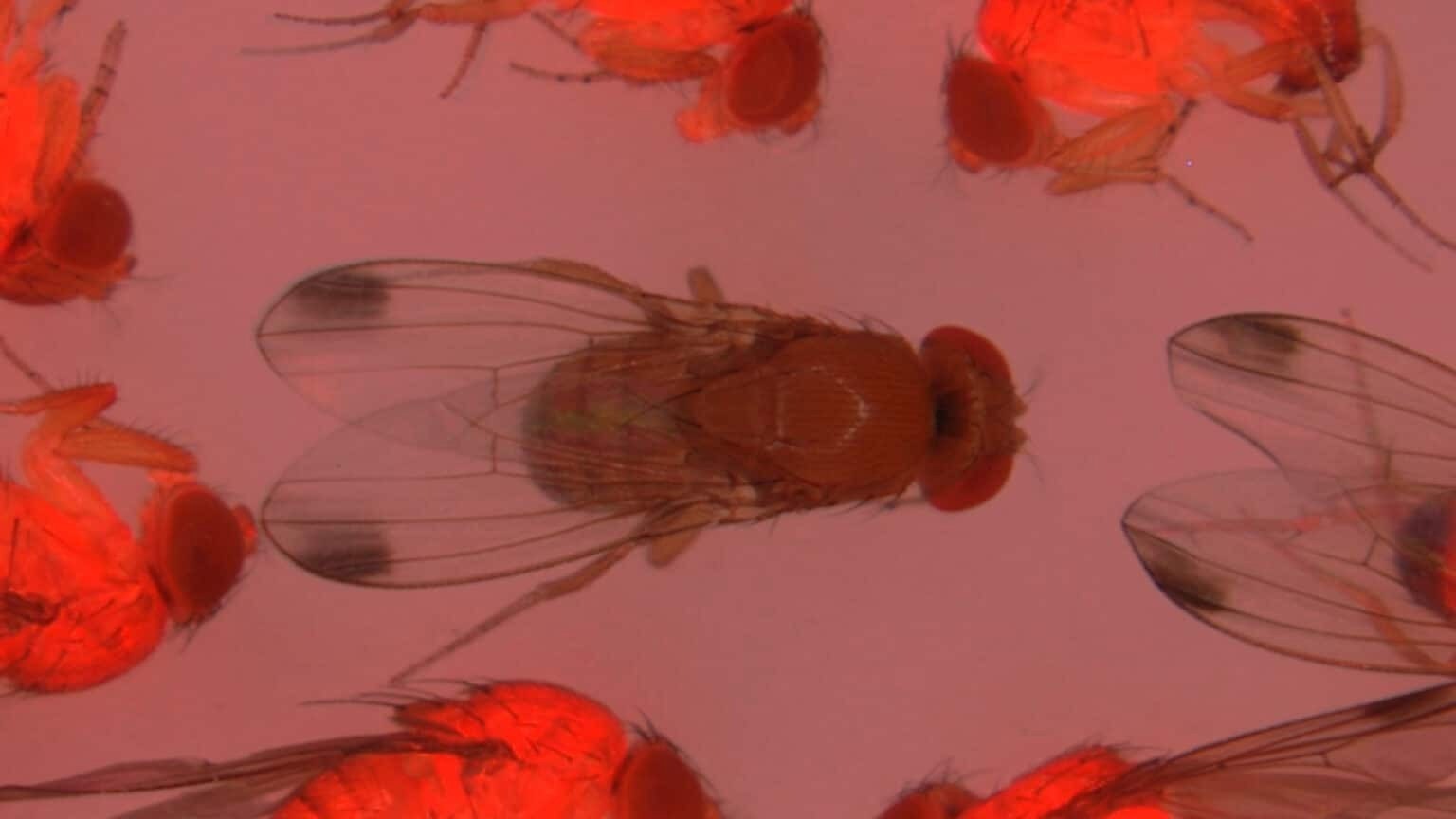Reviewed by Danielle Ellis, B.Sc.Jun 13 2023
According to recent research from North Carolina State University, scientists have created a “homing gene drive system” based on CRISPR/Cas9 that could be used to suppress populations of Drosophila suzukii vinegar flies—so-called “spotted-wing Drosophila” that severely damage soft-skinned fruit in North America, Europe, and parts of South America.
 NC State researchers used a florescent protein to mark the genetic changes to spotted-wing Drosophila. Image Credit: North Carolina State University.
NC State researchers used a florescent protein to mark the genetic changes to spotted-wing Drosophila. Image Credit: North Carolina State University.
The NC State scientists created two CRISPR gene drive systems that specifically targeted a D. suzukii gene termed doublesex, which is important for sexual development in flies. CRISPR stands for “clustered regularly interspaced short palindromic repeats,” and Cas9 is an enzyme that cuts DNA like a pair of molecular scissors.
CRISPR systems, which are derived from bacterial immune systems that recognize and destroy viruses and other pathogens, are being developed to solve problems in human, plant, and animal health, among other applications.
In several studies, targeting the doublesex gene resulted in female sterility because females were unable to produce eggs, according to Max Scott, an NC State Entomologist and the corresponding author of the study. The study was published in the Proceedings of the National Academy of Sciences.
This is the first so-called homing gene drive in an agricultural pest that potentially could be used for suppression.”
Max Scott, Study Corresponding Author and Entomologist, North Carolina State University
Gene drives can preferentially select, change, or delete specific traits or attributes and “drive” those edits into future generations, resulting in a chance of transferring those changes to progeny that is sometimes significantly greater than 50%.
“Gene drive means biased inheritance,” Scott notes.
The presence of the CRISPR/Cas9 genetic alteration to the fly’s genetic blueprint, or genome, was marked by a fluorescent red protein, according to the researchers. The fluorescent protein was passed to 94–99% of progeny via the gene drive systems, according to the study.
The scientists also utilized mathematical models to determine how well the gene drive system will suppress a specific D. suzukii population in laboratory cages. The research revealed that releasing just one modified fly for every four “wild” flies (those that have not been genetically modified) might tank fly populations in eight to ten generations.
Because doublesex is such a conserved gene required for female development in so many fly species, I think the homing gene drive strategy could be used for other pests.”
Max Scott, Study Corresponding Author and Entomologist, North Carolina State University
Scott and co-workers previously demonstrated success in suppressing D. suzukii populations using a strain that produces only males, as well as in reducing lab populations of the New World screwworm fly.
The next phase will be to conduct controlled trials in cages in an NC State greenhouse.
We’re doing small population cage suppression experiments. We’re hoping to learn if repeated fly releases with a 1:4 ratio will suppress fly populations in a cage like the modeling suggests.”
Max Scott, Study Corresponding Author and Entomologist, North Carolina State University
Source:
Journal reference:
Yadav, A. K., et al. (2023). CRISPR/Cas9-based split homing gene drive targeting doublesex for population suppression of the global fruit pest Drosophila suzukii. Proceedings of the National Academy of Sciences. doi.org/10.1073/pnas.2301525120.